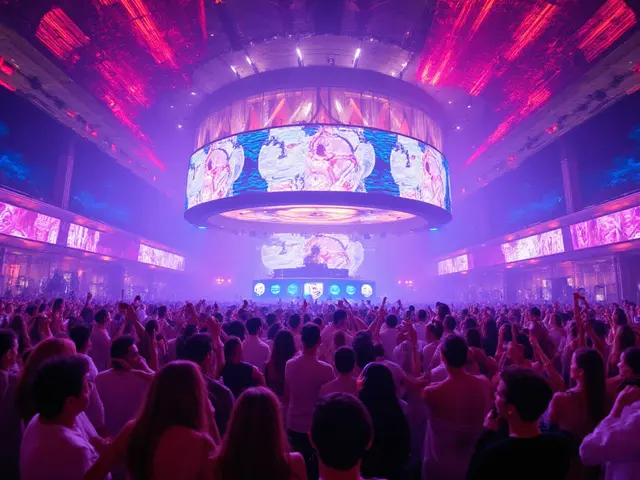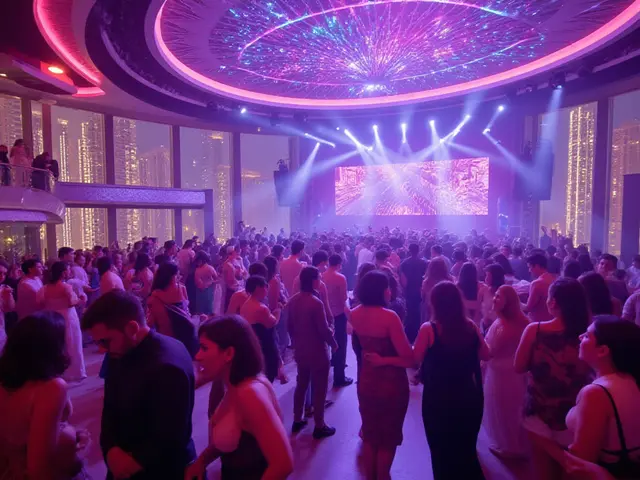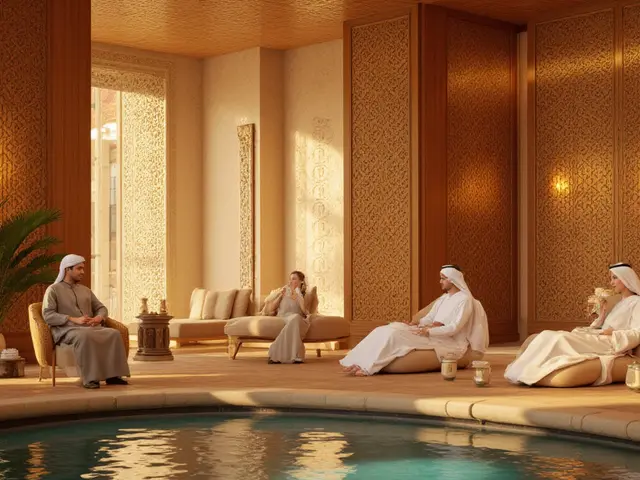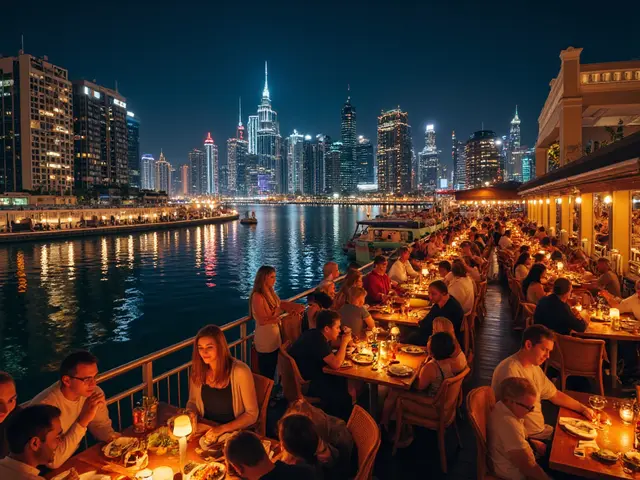It’s early evening in Dubai and the golden sunset spills across Jumeirah Beach Road, lighting up the sand-hued stone of one of Dubai’s most admired attractions—the Jumeirah Mosque. If you’ve driven down this strip, taken a detour after a Friday brunch at La Mer, or had any guest in town asking for the “real Dubai,” there’s a good chance the mosque has come up in conversation. The city is known for its record-breaking skyscrapers, but Jumeirah Mosque stands out for a different reason: it invites everyone inside, offering a glimpse behind the walls and rituals usually reserved for the faithful. And that alone flips the script on what people think they know about Dubai’s spiritual heart.
The Heartbeat of Faith in Modern Dubai
Jumeirah Mosque isn’t just a pretty photo op or a stop for tourists checking boxes. It’s a living space where the rhythm of Dubai’s faith is on full display. The mosque is open to everyone—yes, really—to come see what Islamic worship looks like up close. Guided tours are held almost daily (except Friday mornings), organized by the Sheikh Mohammed Centre for Cultural Understanding (SMCCU). These are more than guided walks; they’re open chats about Emirati culture, faith, and, quite honestly, those awkward questions many have but never ask out loud. Want to know about Ramadan fasting? Wonder how prayers work or what’s written in the Quran? You get answers—served with Emirati dates and a strong cup of gahwa coffee. Pretty cool, right?
Most mosques in the region are open only to Muslims, but Jumeirah Mosque bucks that trend. The rule here is simple: "Open Doors, Open Minds." When you step through its arches, you’re stepping into a conversation between cultures. This approach has made the mosque a magnet for Dubai residents and tourists alike, from European backpackers to business execs fresh off Sheikh Zayed Road. If you mention you’ve visited Jumeirah Mosque in a Dubai coffee shop, expect people to nod with genuine approval. It’s a rite of passage for anyone trying to understand what makes this city tick.
Architectural Beauty That Blends Tradition and Urban Chic
Let’s talk about its looks because Jumeirah Mosque really knows how to pose for a camera. Constructed in 1979 as a gift from the late Sheikh Rashid bin Saeed Al Maktoum, this mosque was inspired by the medieval Fatimid tradition from Egypt and Syria. The twin minarets stand tall, bookending a graceful central dome with detailed stonework that catches the Dubai sun spectacularly at golden hour. Even folks who aren’t into architecture take out their phones, snapping shots of its creamy facades that light up at night with well-placed spotlights.
What’s different about its design? For starters, it’s big enough for about 1,200 worshippers, but the space feels intimate, thanks to light flooding in through arched stained-glass windows and intricate geometric patterns lining the walls. The mix of symmetry, arabesque calligraphy, and cool marble floors show off a unique blend of Middle Eastern and North African influences. The mosque’s open porticos and airy courtyards, breezy on most days, make the whole complex feel calm—a nice break from that humid Dubai rush.
If you’re a fan of numbers, here’s a quick overview of how the Jumeirah Mosque fits into Dubai’s broader landscape for Islamic architecture:
| Mosque | Year Built | Architectural Style | Capacity |
|---|---|---|---|
| Jumeirah Mosque | 1979 | Fatimid | 1,200 |
| Grand Mosque (Bur Dubai) | 2001 | Ottoman | 1,200 |
| Al Farooq Omar Bin Al Khattab Mosque | 2011 | Ottoman/Moorish | 2,000 |
The Jumeirah Mosque is often compared to the Grand Mosque near Dubai Creek and the dazzling Al Farooq Mosque in Al Safa, but what makes it unique is its accessibility—and the way its minimalist facade stands out against the skyline, which is rare in a city addicted to glass and steel towers. Locals love to boast that even on a Friday, when the mosque is packed for prayer, visitors still find themselves welcomed and guided around.
Culture Shock: Expectations vs. Reality Inside the Mosque
First-timers might worry about strict rules or accidentally breaking etiquette. Here’s the thing—Jumeirah Mosque and the staff from SMCCU make it incredibly easy for everyone to feel comfortable. There’s a modest dress code: loose clothing, ladies cover their hair, gents wear long pants, but those who show up in shorts won’t get scolded; someone simply hands them an abaya or kandura at the door. No one is made to feel outside or awkward. There’s a brief tutorial right before you go in—think of it as Mosque 101 for guests.
Guides encourage questions, even those you think might sound silly. From “Can I visit during prayer?” (answer: yes, but you’ll be asked to keep quiet and respectful) to “Why are shoes left outside?” nothing is off-limits. Visitors are invited to sit on the carpet, sip traditional coffee, and listen as guides walk through five daily prayers in the Islamic calendar, the story behind the call to prayer (Adhan), and Ramadan customs in Dubai. Curious how Eid is celebrated? Want to understand how Islamic art finds its way into every line and arch? This is where things get personal, with guides sharing stories about their own families’ traditions for Eid or breaking fast during Ramadan. It doesn’t feel like a history lesson, more like swapping tales over a late-night roadside chai in Satwa.
If you love soaking in local lore, pay attention to the little details—such as how date palms out front are more than just landscaping. In Emirati culture, they’re a symbol of hospitality, and you’ll likely get to taste some dates as part of your experience. The friendly, conversational vibe reminds expats that Dubai is more than luxury malls and sky-high rents. At its core, the city is driven by a sense of community—one that welcomes everyone inside, whether for prayer or for a plate of luqaimat at a weekend majlis.
Planning Your Visit: Practical Tips for Residents and Expats
If you’re a Dubai local, you probably know traffic can get wild around Jumeirah on weekends. The mosque sits right in between Jumeirah Beach and Downtown, so even a short drive can turn into a mini road trip at sunset. Weekend mornings, especially Saturdays, are less hectic for parking and crowds. If you’re bringing friends, book a tour in advance with the SMCCU; it keeps everything smooth and guarantees you a spot, especially during tourist peak season from November to March.
Here’s a lifehack—combine your mosque visit with a stop at City Walk or a stroll along Jumeirah Beach. Both are just ten minutes away, perfect for post-tour coffee or for showing out-of-towners Dubai beyond the usual Burj Khalifa selfies. Kids are welcome on tours, and guides are used to curious little ones. Expats new to the city often discover that visiting the mosque helps break the ice with Emirati neighbors, or serves as a chill educational outing that inspires some much-needed cultural understanding.
The best photo ops are just before sunset when the light makes the mosque’s domes glow. A quick weather check: Dubai summers can hit 45°C, so late afternoons or winter visits are way more comfortable. During Ramadan, mosque hours may change, and it’s wise to check the latest timings on the SMCCU’s website or their Instagram page. Women traveling solo rave about the feeling of safety and inclusion, since staff and volunteers are always around to guide and answer questions.
- Modest clothing is a must, but mosque staff provide abayas and headscarves if needed.
- No booking required for individuals—just show up, but big groups should call ahead.
- Cameras are welcome, as long as you respect worshippers’ privacy.
- Free parking is available, but gets full fast on Friday prayer times.
- Ask about special night tours, sometimes held during Eid or Ramadan.
Residents who join the tour often discover nuggets about local customs that never come up in glossy Dubai tourism brochures. For example, the story behind the five domes, each symbolizing a pillar of Islam, or why Emirati families break their Ramadan fast with dates and laban. It’s not just sightseeing; you leave a little wiser about your adopted city, which comes in handy next time someone asks what Dubai’s really like.
Jumeirah Mosque’s Role in Bridging Cultures—Then and Now
Walk anywhere in Old Dubai—from Deira’s Gold Souk to the historic Al Fahidi district—and you’ll notice a sense of cultural fusion that’s hard to pin down. Jumeirah Mosque takes that idea and plants it right in the heart of modern Dubai. It’s a hub for dialogue, not just a showpiece for visitors. The SMCCU’s mission is built into everything they do: breaking stereotypes, demystifying Islam, and making it easy for anyone (whether they’ve lived here for a decade or just landed at DXB yesterday) to learn without fear of embarrassment.
In the past decade, over a million visitors have attended mosque tours—an impressive number, even for a city that does things in bulk. Dubai’s leadership continues to support openness and education in line with the vision first set by the late Sheikh Zayed bin Sultan Al Nahyan. School groups, diplomats, religious leaders, and tourists all share the same space at Jumeirah Mosque, exchanging ideas that go far beyond the prayer mat.
Cultural festivals, art workshops, and even food tastings happen on-site, leveraging the mosque’s open-door policy. Come during March and you might end up at the Emirates Literature Festival, with authors and artists talking about cultural identity inside the very space designed to nurture it. On the mosque’s Instagram feed, you’ll spot everything from evening majlis sessions to Ramadan light shows. These events bring the city’s diverse population together in ways that high-rise offices or shopping malls just can’t match. For expats, getting to know these spaces changes the relationship they have with Dubai—what might start as curiosity turns into genuine appreciation for the city’s layers.
As Dubai continues its sprint into the future—think Dubai Creek Harbour, Museum of the Future, or the Dubai Expo legacy—the Jumeirah Mosque stands its ground, a steadier pace offering reflection and conversation. In a city that thrives on reinvention, a visit here reminds both locals and long-haul residents why being part of Dubai means being part of something bigger than oneself: a culture built on hospitality, humility, and a readiness to welcome strangers as friends.
For anyone chasing the city’s next big high-rise or flashy development, maybe the real wow-factor is tucked in between those old-school minarets and the hush of the prayer carpet. Ask a Dubai old-timer, and they’ll say Jumeirah Mosque isn’t just a landmark—it’s a living invitation to understand the city’s soul.





